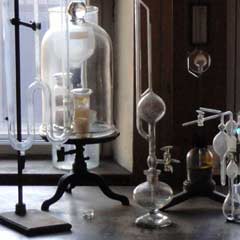 Resources
Resources
At ForensicsColleges, we want to connect students, prospective students, and professionals to the multitude of resources available online in order to stay up-to-date on recent news and trends within the online forensics community. From national news in the industry, cold cases in kidnapping, and top websites for different areas of forensic study, you can always find what you’re looking for here in our resources section.
Further your forensic knowledge and help continue the advancement of forensic research today. For additional information and up-to-date news, follow us on Twitter at @ForensicsEd.

Women in Criminal Justice
While the notion that women must make up ground in several male-dominated fields is well-established, studies suggest the shortage of women in criminal justice is especially harmful for the nation at large. Cities that hire a higher share of women police officers, for instance, have far fewer complaints of excessive force, which, in turn, saves taxpayers a sizable sum in legal fees.

Forensic Science and Investigation Scholarships (2026)
Taking on debt to fund a college education used to be a direct path to social and financial advancement, but the latest studies show that student debt actually might hinder it. The good news is that help is out there for those who need it, and there are more scholarships available than ever before.

Forensics Casefile: Cracking the Silk Road
In the wake of the Silk Road case, the need for modern forensics investigators has only grown and so has the complexity of their task. This isn’t just a fight against an increasingly adept criminal class, but also one to master the modes and methods of the bleeding edge of technology.

Mobile Forensics: How Digital Forensics Experts Extract Data from Phones
Perhaps nothing has changed the modern investigative procedure as much as mobile forensics. A subset of digital forensics, mobile forensics involves the retrieval of data from a mobile device, typically a cell phone or tablet, but potentially a smartwatch, camera, GPS device, or drone.

Top Forensic Chemistry Programs (2025-2026)
Forensic chemistry attracts curious problem-solvers who can collect evidence with precision and remain objective in their observations. Ideal candidates for forensic chemistry positions must prove their abilities to follow legal and scientific protocols when collecting physical evidence from a crime scene and analyzing it in a laboratory.

The Federal Bureau of Investigation (FBI) is the principal federal law enforcement agency of the United States. Its investigative authority is the broadest of all federal law enforcement agencies, and the Bureau’s workforce is similarly large, employing approximately 35,000 people, including both special agents and support professionals, to serve its mission of protecting the American people and upholding the Constitution.

Top Online Forensic Accounting Programs
By earning a graduate certificate or degree in forensic accounting, professionals with bachelor’s degrees in accounting can become certified in fraud examination, thereby protecting individuals, corporations, and entire economies from the perils of financial corruption. Online forensic accounting programs have expanded to allow students to maintain their current jobs while earning a certificate or degree.

In order to catch tomorrow’s killers and to protect the innocent, forensics experts will need to look for critical evidence in the places it’s now most likely to be found: a stray email address, a grainy clip of surveillance footage, a single incriminating IP address pulled from a list of countless others.


